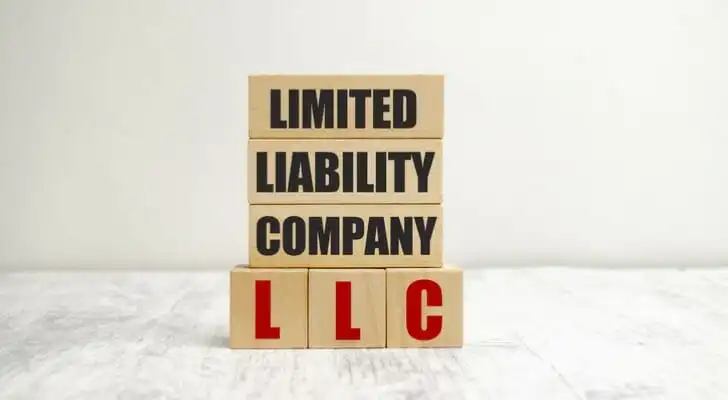Not all businesses are created, or taxed, equally. Limited liability companies (LLCs), one of the most common business structures in the U.S., number in the millions. Their popularity is driven by what’s called “pass-through entities.” This means that the business does not pay corporate income taxes. Instead, the individual owners or members of the LLC collect its proceeds as income and then pay personal income taxes on the results. If you’ve ever spent money with a small business, you’ve contributed to an LLC. Here’s how the LLC pass-through taxation works.
What Is an LLC?
An LLC is a type of business entity governed by state law, so the details of how LLCs work will differ by jurisdiction. Most states, however, share the same general frameworks.
An LLC works similarly to a partnership. The owners of the company, called members,typically share ownership and operating duties. Depending on how you structure the LLC, the IRS will consider it as either a partnership, a corporation, or an expense on the individual operator’s tax return.
The essential aspect of an LLC is that it insulates its members from the company’s debts and liabilities by using its own accounts to pay all bills. If it cannot pay its debts, the creditor cannot seek payment from the LLC’s members.
This is the key difference between an LLC and a partnership. While both entities are similar, partners share the liability of their business while LLC members do not. The LLC structure allows people to start a company without taking on the risk that they will be personally ruined if the company fails.
How Are LLCs Taxed?

LLCs are typically treated with what’s known as “pass-through taxation.” This means that the LLC does not file its own corporate income taxes. Instead, after the LLC pays its bills and debts, the members get the rest as income and are taxed individually. .
This is the case no matter how you distribute the LLC’s money at the end of each year. This means that even if you leave the company’s money in its own bank accounts, the individual members have to report those profits on their federal income taxes.
There are no upper or lower limits to how many people can form an LLC. One person can form an LLC on their own, or many people can join together to do so. This creates two main forms of taxation: individual operators (or “single members”) and multi-member corporations.
Individual Operator LLCs
When an individual forms an LLC on their own, the IRS treats the company as a sole proprietorship.
Like with all LLCs, the company itself does not file any taxes. Instead, after the company collects its revenue and pays its bills, the remaining profits or losses pass through to the individual owner’s income taxes. The owner includes all profits for the LLC, or takes a deduction for any losses. Most of the time, an owner will report their LLC’s profits and loss as either self-employment income or business income.
Multi-Member LLCs
For multi-member LLCs, the IRS classifies the company as a partnership for tax purposes. While the LLC itself doesn’t file a separate income tax return, it must submit certain forms to report its profits and losses to the IRS. Once the company generates revenue and covers its expenses, the remaining profits are distributed to its members. Members then report these earnings or losses on their personal tax returns.
The method of profit distribution depends on the structure of the LLC. By default, most LLCs divide profits equally among all members unless stated otherwise. However, it’s advisable for an LLC to establish an operating agreement. This document outlines the operational rules of the company, including how profits and losses are allocated among members.
Typically, an operating agreement will stipulate one of two approaches:
- Equal profit sharing among members. This is common in businesses with low overhead, such as professional services.
- Profit sharing based on each member’s investment in the company. This is frequently used in high-overhead industries, like real estate.
Managing the retention and distribution of profits is crucial for multi-member LLCs, especially when the business is more complex than a sole proprietorship or small partnership. Larger LLCs often retain a portion of their profits to cover future expenses and operating costs.
That said, members of an LLC are taxed on their proportional share of the company’s profits, regardless of whether those profits are distributed. Therefore, it’s essential to have a clear and equitable system for deciding how much to distribute versus retain. This helps ensure members aren’t unfairly burdened with taxes on earnings they haven’t received.
Can an LLC Elect to Be Taxed as a Corporation?
Although LLCs are typically taxed as pass-through entities, members can choose to have the business taxed as a corporation. This flexibility allows LLCs to align their tax structure with their specific financial and operational goals. To elect corporate tax treatment, the LLC must file IRS Form 8832.
Electing to be taxed as a C corporation means the LLC becomes a separate taxpaying entity. The business pays corporate income tax on its profits, and any dividends distributed to members are taxed again at the individual level. This results in double taxation but can be beneficial in certain cases, such as when profits are retained in the company for reinvestment. It may also allow for more predictable tax planning if the owners do not need to withdraw profits regularly.
Alternatively, eligible LLCs may opt for S corporation status. This structure maintains pass-through taxation but allows member-employees to receive a portion of the income as salary (subject to payroll taxes) and the rest as distributions (not subject to self-employment tax). This can reduce overall tax liability, especially in closely held businesses where owners are actively involved in operations. However, S corporations must meet specific requirements: they must have no more than 100 shareholders, all of whom must be U.S. persons, and can only issue one class of stock. In choosing to have your LLC taxed as an S Corp, Form 2553 is also required.
There are also administrative implications. S corps must pay reasonable compensation to any owner-employees and may be subject to additional scrutiny from the IRS regarding how income is split between salary and distributions. Both C and S corporation elections require careful recordkeeping and compliance with additional tax filing requirements.
Business owners considering a change in tax status should evaluate the impact on current income, expected growth, reinvestment plans and payroll obligations. Consulting a small business tax advisor can help determine whether electing corporate taxation will provide a net financial benefit that aligns with the LLC’s goals.
Bottom Line

An LLC uses what’s known as pass-through taxation. This means that the company does not file or pay its own taxes. Instead, the LLC members claim the entity’s profits or losses as part of their taxes. Even if an LLC’s profits are left in its own bank accounts at the end of the year, the members of the LLC will still owe personal taxes on the money.
Tax Planning Tips
- When it comes to their taxes, some people need a professional in their corner, someone like a financial advisor. Finding a financial advisor doesn’t have to be hard. SmartAsset’s free tool matches you with vetted financial advisors who serve your area, and you can have a free introductory call with your advisor matches to decide which one you feel is right for you. If you’re ready to find an advisor who can help you achieve your financial goals, get started now.
- If you considering setting up an LLC, be sure to familiarize yourself with the ins and outs of this business structure. Learn more about how this corporate form works in our full primer on LLC taxes.
- Estimating how much you may owe the IRS in taxes or how large of a refund you can expect to receive can be critical to building an accurate financial plan for the year. SmartAsset’s tax return calculator can help you estimate and plan ahead.
Photo credit: ©iStock.com/Andrei Askirka, ©iStock.com/fizkes, ©iStock.com/PeopleImages
